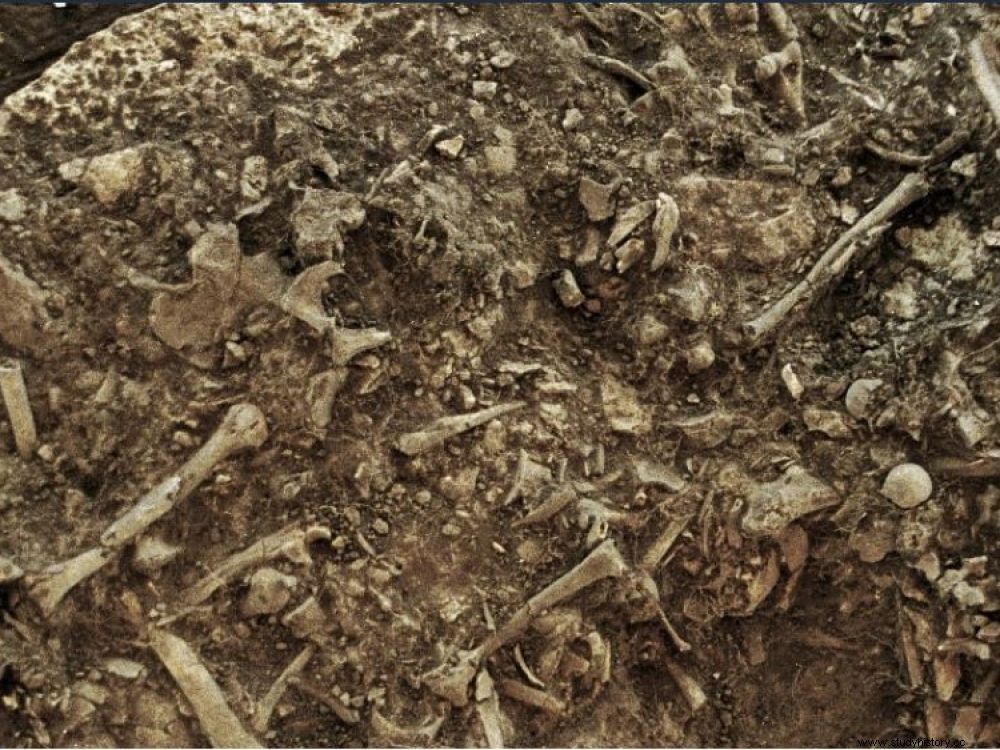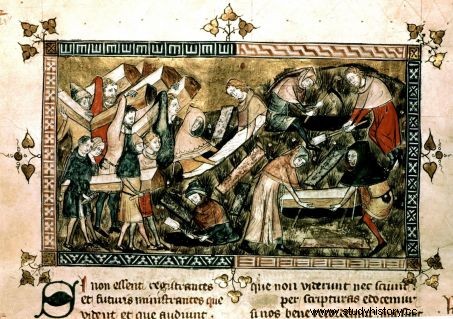The oldest strain of plague found among Neolithic agricultural populations, 4900 years ago, in southern Sweden.

The grave where the remains of a 20-year-old woman whose genetic material contained the plague bacteria were found, in Sweden, 4900 years ago.
The plague has a long history...longer even than estimated! A previously unknown strain of Yersinia pestis, the bacterium at the origin of this dramatic disease has in fact just been found in the genetic material of a 20-year-old young woman (Gökhem2) who died in Sweden, in the Neolithic period, 4900 years ago. As well as in that of a farmer (Gökhem4) from the same burial pit of Frälsegården, in Falbygden, in the south of the country. The discovery came as researchers analyzed ancient DNA databases of 1,058 human genomes to better understand the evolutionary history of this scourge, reports a paper published December 6, 2018 in the journal Cell . The international team led by Simon Rasmussen (University of Copenhagen, Denmark) has thus identified this strain - known as Gökhem - which bears the genetic marks of pneumonic plague. This would explain why, as shown by previous work carried out on this same site of Frälsegården, 78 people were buried in a very short period of time, 4900 years ago. All of them may have perished during an epidemic.
The comparison of this strain of Yersinia Pestis with those already known indicates that it would have diverged around 5783 years. It would therefore be, according to the conclusions of the study, the oldest strain of plague identified to date. Until this discovery, researchers believed that those who had introduced the plague among the agricultural populations of Europe were nomadic pastoralists from the Eurasian steppes, as suggested by a 2017 article published in the journal Current. Biology . These results reveal that the plague was already present on the European continent before their arrival. In fact, when Yamna (or Yamnaya) herders reached Europe from the Central Asian steppes around 4,700 years ago, they would have encountered populations already decimated by this disease, explains Simon Rasmussen. “As we see the plague spreading, great technological innovations, such as wagon transport and animal traction, were emerging. An ideal way to spread a pathogen over long distances said the geneticist. For the signatories of the article, the plague would therefore have spread via these first trade networks, rather than by waves of massive migrations, as has often been suggested. These authors believe above all that we could be, in Sweden, facing the vestiges of the first great pandemic of humanity.

From the Annals of Gilles de Muisit, kept at the Royal Library of Brussels (Belgium), the epidemic of "black plague" in Tournai in 1349. The large number of coffins shows the massive aspect of the mortality linked to the epidemic. ©Snark Archives / Photo 12 / AFP
However, these specialists remind us, the Neolithic and Bronze Age plagues were probably less virulent than the appalling pandemics that followed, like the episode of the reign of Justinian in the 6th century. century which caused some 40 million deaths; of the terrifying "Black Death" of the XIV th century, in the Middle Ages, which annihilates half of the inhabitants of Europe; or the epidemic that decimated nearly 12 million people in India and China in 1855. "We often think that these super-pathogens have always existed, but this is not the case recalls Simon Rasmussen. The plague would have actually evolved from a less virulent organism:in the Bronze Age, the bacteria would have spread from human to human, by coughing, mainly affecting the respiratory system. It was only after undergoing several genetic mutations that this bacillus, then transmitted by fleas and rats, would have evolved into its terrible bubonic form, around 1000 BC. Still according to these authors, this prehistoric pandemic could explain the decline experienced by certain settlements in Europe at the dawn of the Bronze Age. A subject that is the subject of great discussion.
